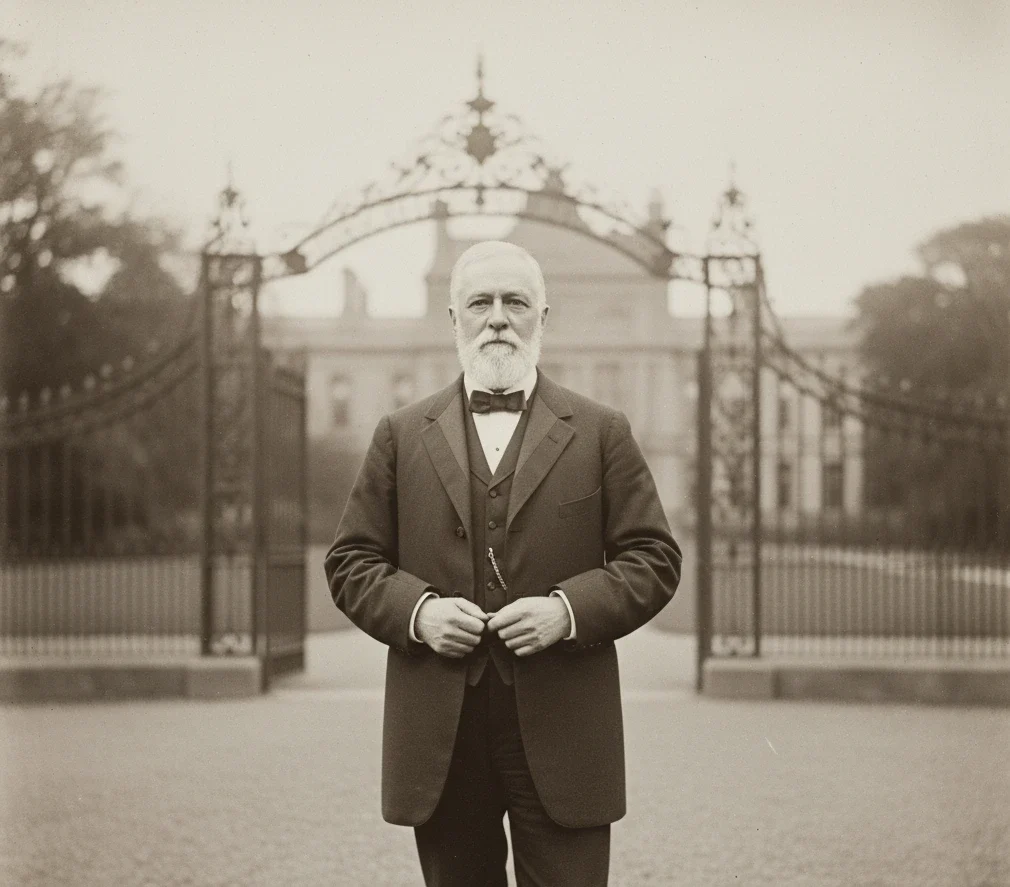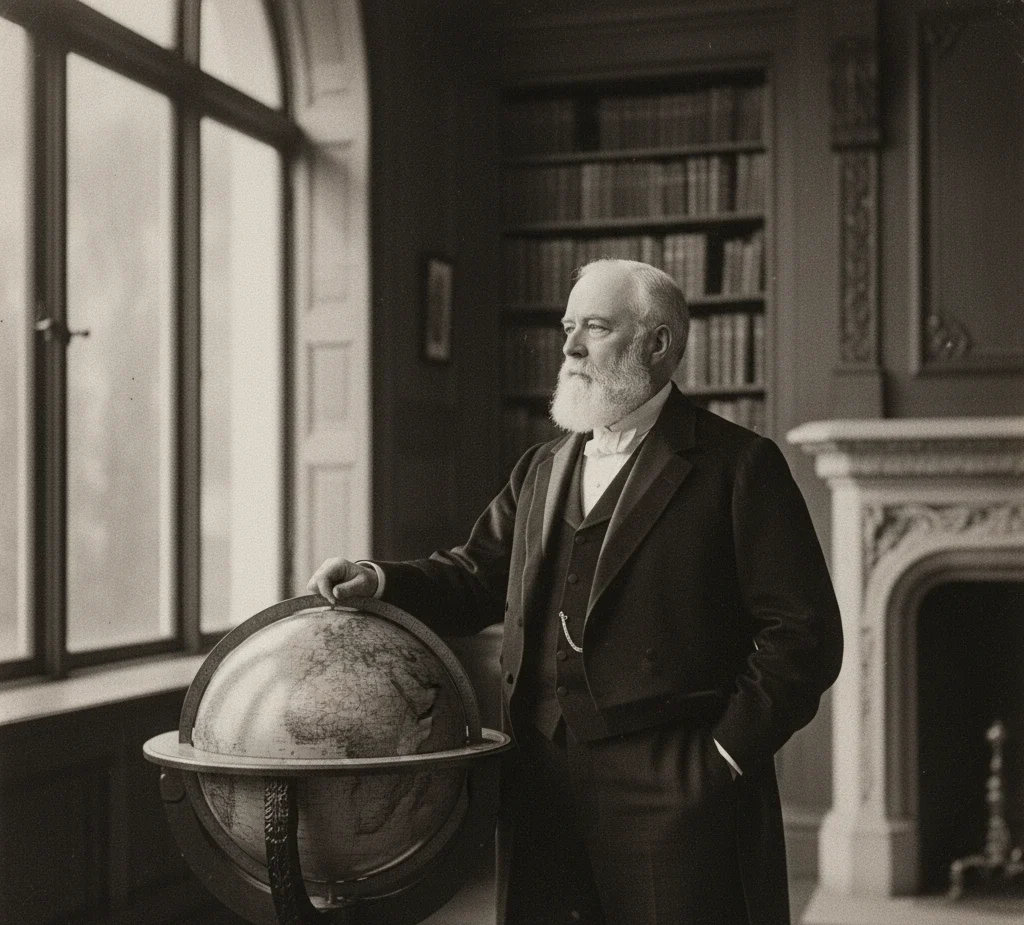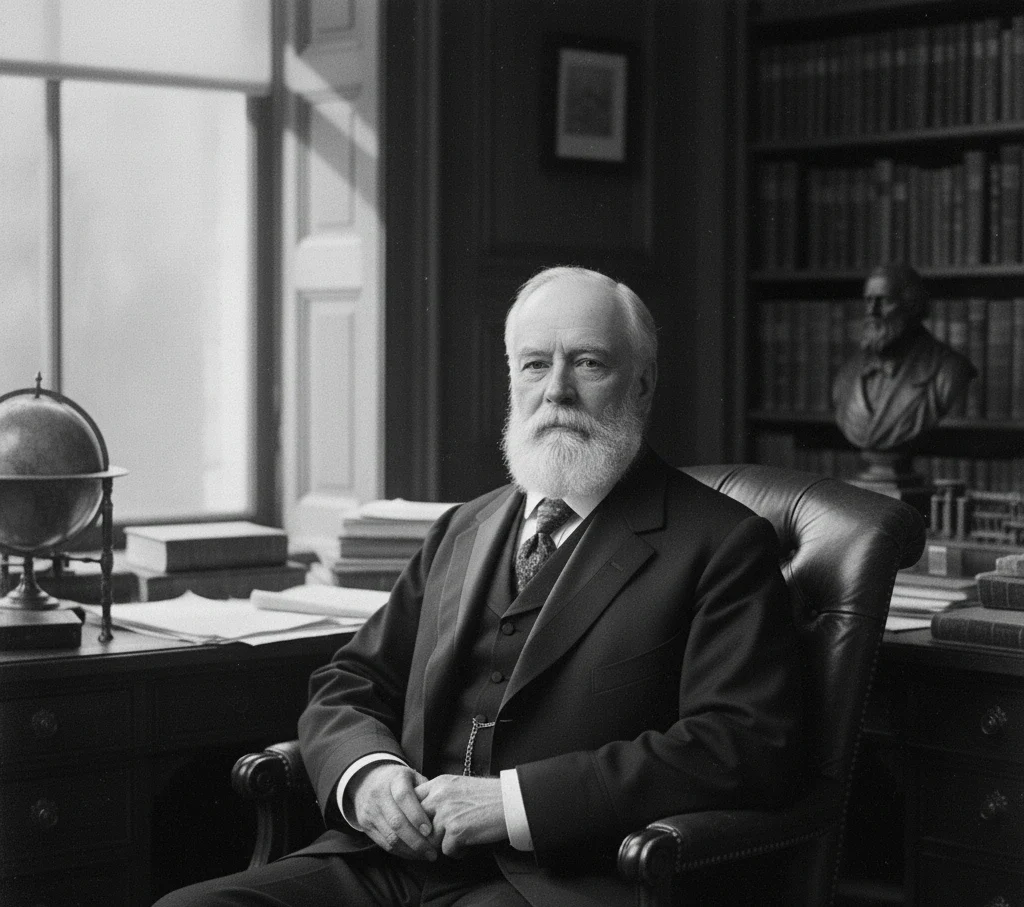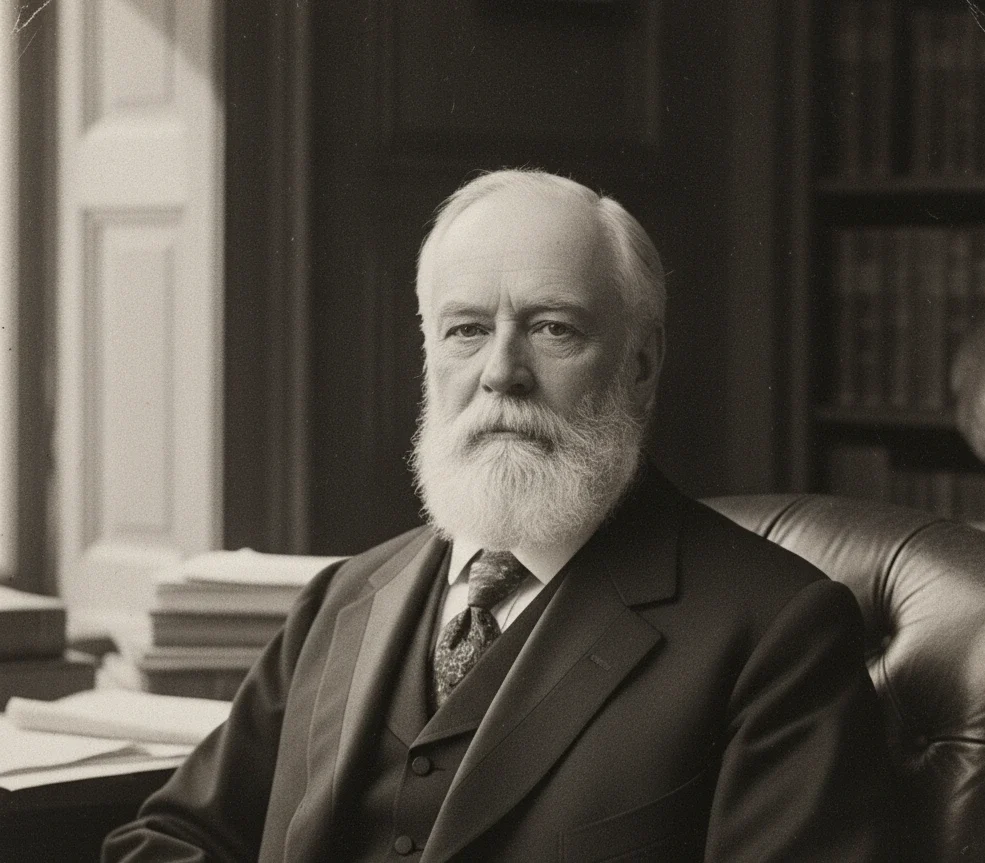Before becoming one of the wealthiest men in American history, Andrew Carnegie was a poor Scottish immigrant who earned just $1.20 a week working in a cotton factory. By 1901, he had built the largest steel company in the world and then gave almost all his fortune away.
Carnegie’s rise from poverty to power is not just a story of ambition but also of vision, ethics, and generosity. His legacy in philanthropy, education, and public service continues to influence the world even in 2025.
Quick Facts
| Full Name | Andrew Carnegie |
| Born | November 25, 1835, Dunfermline, Scotland |
| Died | August 11, 1919, Lenox, Massachusetts, USA |
| Occupation | Industrialist, Philanthropist |
| Known For | Carnegie Steel Company, Philanthropy, “Gospel of Wealth” |
| Estimated Net Worth (2025 adjusted) | Approx. $310 Billion |
| Nationality | Scottish-American |
| Quote | “The man who dies rich dies disgraced.” |
Early Life & Education

Born into poverty, Andrew Carnegie’s father was a weaver whose livelihood collapsed during the Industrial Revolution. In 1848, the family migrated to Pittsburgh, Pennsylvania, hoping for a better future.
At just 13 years old, Carnegie began working as a bobbin boy in a cotton mill. Despite his long hours, he pursued education relentlessly, borrowing books from Colonel James Anderson, who opened his private library to working boys.
This early exposure to books and self-education shaped Carnegie’s entrepreneurial mindset. The experience inspired his belief that knowledge should be accessible to all, a principle that later guided his philanthropy.
“A library outranks any other one thing a community can do to benefit its people.” Andrew Carnegie
Career Beginnings
Carnegie’s climb from messenger boy to industrial magnate began with his role at the Pennsylvania Railroad Company, where he became the personal assistant to Thomas A. Scott, one of America’s most influential businessmen.
There, Carnegie learned critical lessons about business ethics, leadership traits, and corporate structure. He quickly realized that success required efficiency, foresight, and investment in technology.
Using his savings, he invested in ventures like iron bridges, oil wells, and telegraph companies, early examples of his entrepreneurial mindset and sharp understanding of industrial growth.
Founding the Carnegie Steel Company

In the 1870s, Carnegie recognized the rise of steel as the foundation of modern America. He established the Carnegie Steel Company in 1892, using innovative methods like the Bessemer process to produce steel faster and cheaper than anyone else.
Carnegie’s success wasn’t just about production; it was about visionary business practices. He believed in vertical integration, controlling every step of production from raw materials to distribution, which helped reduce costs and maximize profits.
His company supplied steel for:
- Railroads and bridges across America
- The Brooklyn Bridge and Empire State Building foundations
- Expanding cities and new skyscrapers that defined the 20th century
This strategic vision turned him into one of the most famous and wealthy industrialists of all time.
Andrew Carnegie Business Growth & Achievements
By 1900, the Carnegie Steel Company had become a corporate empire, producing more steel than the entire nation of Great Britain.
Key Achievements:
- Revolutionized steel manufacturing with mass production techniques
- Built the Homestead Steel Works, the largest plant of its kind
- Introduced scientific management and worker productivity systems
- Focused on low cost, high output, and continuous reinvestment
In 1901, Carnegie sold his company to J.P. Morgan for $480 million, forming the U.S. Steel Corporation, the world’s first billion-dollar business.
At that moment, Carnegie officially retired from business, but his next chapter would change the world in another way.
Andrew Carnegie’s Net Worth in 2025 and Wealth Sources

At the time of the sale, Andrew Carnegie’s personal wealth was around $480 million, over $310 billion in today’s money when adjusted for inflation.
Main Sources of Wealth:
- Carnegie Steel Company (core revenue source)
- Railroad bonds and oil ventures
- Real estate and industrial investments
- Corporate partnerships and innovation rights
Despite his immense fortune, Carnegie believed in responsible wealth. His essay, “The Gospel of Wealth” (1889), outlined his philosophy: the rich should act as stewards of wealth, redistributing it for social good.
Philanthropy & Legacy
After selling his company, Carnegie became one of the greatest philanthropists in history. Over the next two decades, he donated nearly 90% of his fortune, funding projects in education, science, peace, and culture.
Major Contributions:
- Carnegie Libraries: Over 2,500 libraries built worldwide (1,681 in the U.S.)
- Carnegie Mellon University: Founded in Pittsburgh to promote technical education
- Carnegie Hall: Built in New York City as a center for the arts
- Carnegie Endowment for International Peace and Carnegie Corporation of New York
Even in 2025, these institutions continue their mission. The Carnegie Corporation’s 250th Anniversary Grants recently awarded $10,000 to every active Carnegie Library, supporting community learning and civic engagement.
“It is not the man who has little, but the man who desires more, that is poor.” Andrew Carnegie
Challenges and Lessons Learned
Despite his success, Carnegie’s career faced controversies, the most notable being the Homestead Strike of 1892, a violent labor conflict that led to public backlash against his management.
This event deeply affected him and changed his approach to business ethics and human relations.
Key Lessons from Carnegie’s Life:
- The Power of Adaptation: Learning from failure and public criticism is crucial
- Ethical Leadership Matters: True success includes responsibility to employees
- Wealth Has Purpose: Use financial power for lasting community impact
These lessons shaped his transformation from a ruthless businessman to a visionary philanthropist.
Personal Life & Interests
Carnegie married Louise Whitfield in 1887, and they had one daughter, Margaret. He valued family, reading, and travel. His passion for music and art inspired the construction of Carnegie Hall, now a global symbol of cultural excellence.
He was also a peace advocate, supporting international diplomacy and anti-war initiatives long before they became mainstream ideas.
His personal interests, knowledge, peace, and culture are reflected directly in his business and philanthropic values.
Future Legacy & Relevance in 2025
More than a century after his death, Andrew Carnegie’s influence endures. His principles continue to guide philanthropists like Bill Gates and Warren Buffett, who cite his philosophy as an inspiration for their own charitable initiatives.
The 2025 Carnegie Fellows Program supports cutting-edge research in democracy, polarization, and global peace, proving that his business legacy remains alive and evolving.
Carnegie’s story remains a case study in universities worldwide, highlighting the balance between industrial growth, leadership traits, and social responsibility.
Also Read: Hilary Lindh Biography: Olympic Silver Medalist and Skiing Legend
Conclusion
Andrew Carnegie’s journey from a humble worker to a steel magnate and then a global philanthropist defines the true meaning of success.
He showed that greatness isn’t measured by wealth alone, but by the ability to create change, share knowledge, and uplift humanity.
💬 Question for Readers:
What lesson from Andrew Carnegie’s story inspires you most, his business genius or his generosity? Share your thoughts below in the comments.
FAQs
1. What made Andrew Carnegie so wealthy?
His success in the American steel industry through the Carnegie Steel Company, combined with efficient production and strategic investments, made him one of the wealthiest industrialists in history.
2. How much was Andrew Carnegie worth?
At his peak, his fortune was about $480 million in 1901, equivalent to $310 billion today.
3. What are Andrew Carnegie’s most famous philanthropic works?
He funded 2,500 libraries, founded Carnegie Mellon University, Carnegie Hall, and several peace and research foundations.
4. What was Carnegie’s “Gospel of Wealth”?
It was his philosophy that the rich have a moral duty to redistribute their wealth for the public good.
5. Why is Carnegie still relevant in 2025?
His principles of ethical capitalism, education, and community investment continue to inspire modern philanthropists and corporate leaders.












